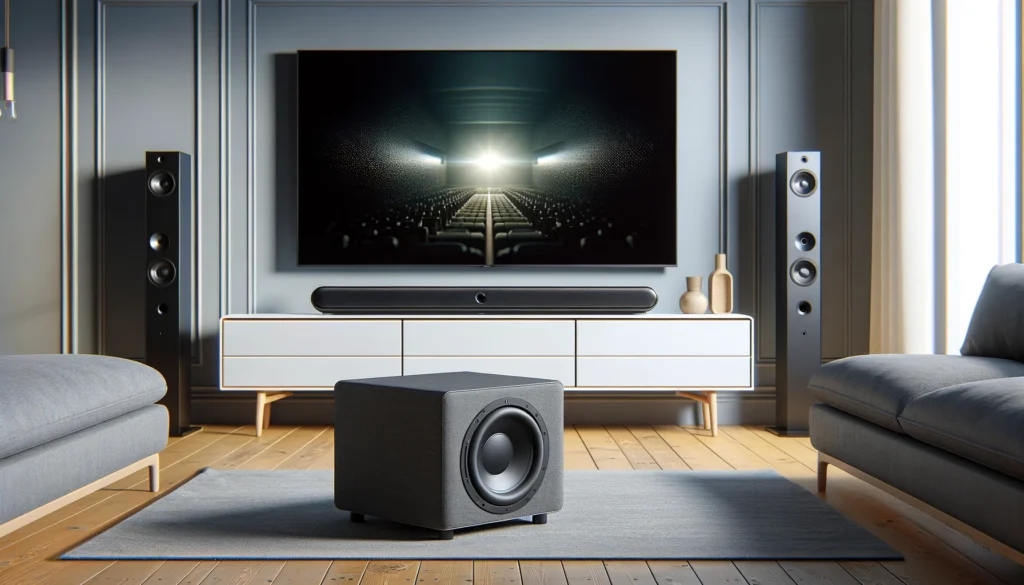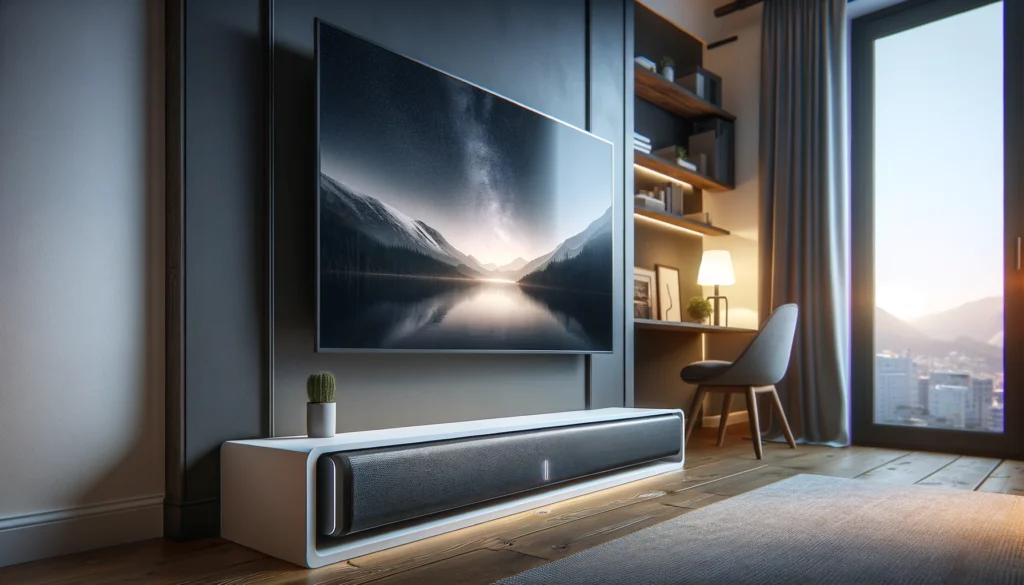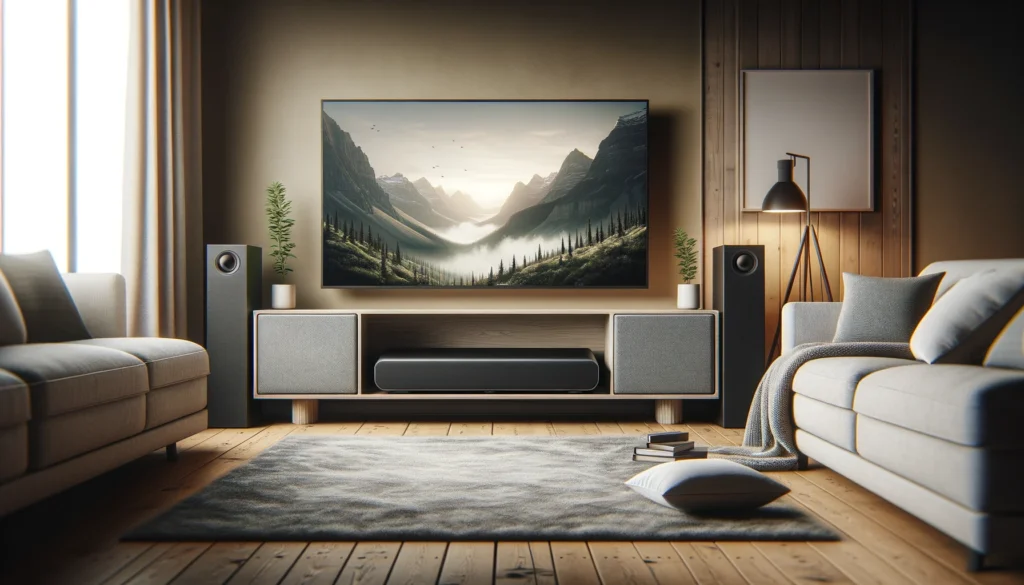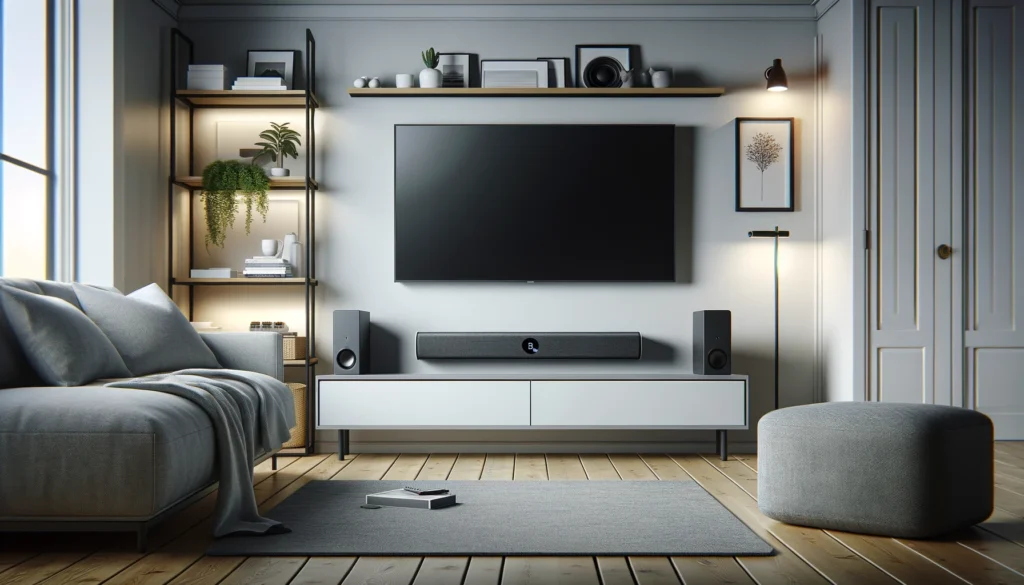With their slim profiles and hi-fi sound, soundbars are a popular upgrade over lackluster TV speakers.
But do they deliver enough bass on their own, or should you add a subwoofer?
Soundbars benefit from the addition of a dedicated subwoofer for room-filling bass, but depending on your room and needs, the convenience of a standalone bar may suffice.
Let’s first look at what soundbars are, then dive into the pros and cons of adding a subwoofer to really feel the beat.
Do Soundbars Need a Separate Subwoofer?

The short answer is no, soundbars don’t require a dedicated subwoofer.
Soundbars are designed as all-in-one upgrades delivering far better and louder sound than Native TV speakers.
Many include built-in subwoofers or manage respectable low-end on their own.
However, adding an external subwoofer allows for even deeper, richer and more realistic bass.
Below, we’ll explore in detail how subs can enhance soundbars depending on your needs.
What is a Soundbar?

A soundbar is a slim, compact speaker designed to improve the audio quality of a television.
Soundbars provide clearer and better sound compared to the built-in speakers in most flat screen TVs.
They are an alternative to setting up several separate speakers and a full home theater system.
With advanced audio technology packed into a single narrow bar, soundbars conveniently mount or sit directly below the TV.
This avoids clutter from running wires to surround sound speakers placed around the room.
They are an simple upgrade over the weak, tinny speakers included in flat panel displays.
Benefits of Adding a Subwoofer

Adding a standalone subwoofer to a soundbar system brings some key benefits:
Provides Powerful Bass That Soundbars Lack
While soundbars can make vocals and mids clearer compared to TV speakers, even high-end models struggle to deliver truly deep, floor-shaking bass on their own.
This is simply due to the limited space inside soundbars constraining the size of bass drivers.
A dedicated subwoofer with a large bass driver specifically engineered just for low frequency effects can provide the powerful, room-filling bass that soundbars lack.
This sub-bass impact is critical for home theater realism with action movies and immersing you in your content.
Makes Explosions and Action Movies More Impactful
Without the reinforcement of a separate subwoofer’s bass performance, soundbars alone can struggle to make loud explosions, car crashes or fight scenes feel truly heart-pounding.
Adding a sub creates those intense vibrations and ultra-low notes that make action sequences genuinely stirring.
Fills a Room with Richer, Fuller Sound
While soundbars provide improved audio clarity over TV speakers, pairing one with a subwoofer fills the room with a deeper, more three-dimensional sound.
The subwoofer handles the low bass while the soundbar focuses on the mids/highs, combining for more enveloping, theater-like sound compared to a soundbar alone.
Soundbar and Subwoofer is Cheaper Than Full Home Theater
One of the appeals of soundbars is they provide audio quality near that of a dedicated multi-speaker home theater system, but at a fraction of the cost, wires and clutter.
Adding a subwoofer completes this high value home theater alternative for significantly less investment than running 5+ separate surround sound speakers with an A/V receiver.
When a Separate Subwoofer Makes Sense

While soundbars aim to pack robust sound into a single unit compared to TV speakers, there are some situations where adding a dedicated sub truly completes the listening experience:
For Larger Rooms Over 12×12 Feet
Soundbars independent bass performance often struggles to provide sufficient low end volume and impact to truly pressurize larger spaces.
Adding a sub tailored for higher wattage output can provide loud, clean bass that gives big rooms theater-like rumble.
For Movie Lovers Wanting Theater-Like Sound
For home theater buffs who watch lots of action films or TV shows where a truly immersive experience matters, a sub is a must.
Soundbars alone often lack the loud, floor-vibrating bass that makes on-screen explosions and car chases really come alive like you’re in a cinema.
For Audiophiles Wanting to Hear Every Detail in Music
Serious music listeners demand speakers that cleanly reproduce every subtle detail and note across the entire sonic spectrum from deep lows to sparkling highs.
With weak bass control, soundbars alone can miss out on the intricate rhythms and beats audiophiles look for in their favorite recordings.
For Those Wanting Home Theater Sound on a Budget
If trying to piece together full surround sound with an A/V receiver and five or more speakers is too expensive, a soundbar plus sub gets you surprisingly close for the investment.
The combo provides nearly the engrossing sound of systems costing twice as much for home theater on a budget.
When Soundbars Alone Will Suffice

While subs clearly enhance soundbar setups for home theater or audio purists, depending on your needs and room size, a soundbar alone may meet your requirements:
For Small to Medium Sized Rooms
If listening in a small bedroom, kitchen or den less than 12×12 feet, a soundbar by itself can likely provide enough loudness and bass depth to satisfy.
Large subwoofers in compact rooms can also be impractical overkill that create unbalanced, booming sound.
For Casual TV Viewing and Listening
Listeners who just want improved clarity for watching news and casual TV shows will find soundbars alone a major improvement over TV audio.
Without needing loud explosions for movies, the bass output produced by a standalone bar should suffice.
Units With Built-In Subwoofers
Higher end soundbars feature larger cabinets that integrate a built-in subwoofer section alongside the other drivers.
These models can put out nearly the low-end performance of a separate sub in one consolidated bar.
Those Wanting Simpler, Clutter-Free Setups
Buyers aiming for quick upgrade over TV speakers in a clean, clutter-free package may find soundbars provide enough audio boost on their own.
Separate subwoofers require their own power cords, placement decisions and potentially take up floor space.
Tips for Integrating a Subwoofer

If adding a standalone subwoofer to boost the capabilities of a soundbar system, some installation tips help optimize performance:
Place the Subwoofer Near the Front of Room
Put the sub at the same end of the room as the main soundbar speaker, close to the TV.
This creates a unified front soundstage compared to disjointed bass behind you.
Set Distances From Walls to Prevent Muddiness
Placing subs too close to room boundaries can create muddy, booming bass so keep several feet between sub and walls.
Experiment in positioning to determine what provides tightest, clearest lows.
Run Room Correction Setup Process
Modern AV gear includes auto room correction using included mics to tune the speakers’ output to your room’s acoustics.
Be sure to run this setup routine for best bass blending.
Adjust Subwoofer Volume to Blend With Soundbar
The subwoofer volume and crossover setting – determining which frequencies play through the sub vs. soundbar – can typically be tweaked manually.
Adjust for smooth bass hand-off between speakers.
Conclusion
Adding a dedicated subwoofer to a soundbar can provide deeper, louder and more impactful bass compared relying solely on a standalone bar.
This helps create genuinely immersive audio for home theater fans or music listeners wanting to hear every subtle detail.
However, depending on room size and listening needs, many will find soundbars on their own a major upgrade over limp TV speakers.
Their convenience and clutter-free setup work well for casual TV viewing.
Look to add a matching subwoofer for those wanting truly floor-shaking low end.
